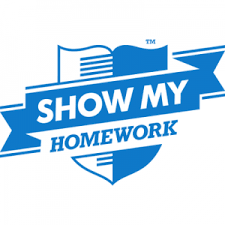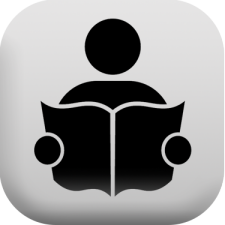Art, Design and Technology
The courses taught within each Key Stage are outlined below. If you have any further queries, please email the appropriate head of subject.
Their email addresses are:
Please note that these email addresses are not monitored daily, but we will endeavour to reply within 3 working days.
Art Curriculum Intent
We believe at the South Wolds academy that Art is a subject that can help all learners to enjoy the creative process and have success. This is achieved through a wide range of key skills, processes, techniques and understanding of the creative world.
All learners are creative and the Art department strives to offer a range of opportunities and practices to allow all learners to have success. Through our curriculum, we aim to provide students with an experience that is exciting and to ensure our students combine practical skills with creative thinking, developing highly valuable and transferrable skills for future careers and life.
The Art department strives to implement the following:
- All learners can access and have success in the Arts.
- Quality before quantity is the most essential aspect of all skill-based work.
- All learners are creative but have ranging skills in different areas of media and process. Therefore it essential a wide range of creative opportunities are available, particularly the digital arts.
- All learners have the confidence to engage in the Arts.
- Contextual understanding is integral to skill based learning.
- Art for Art’s sake. Pure enjoyment of the Arts can never be underestimated.
At KS3 and 4 the Art Department aims to allow all learners to develop personal interests and areas of media that will allow the most success. A high level of independent learning and self-direction are the ultimate goal.
The Art Department wants all learners irrespective of how long they study art to know that they are creative, skilled and able to enjoy and have success in the creative arts
KS3 Art
Course Overview
|
Year |
Autumn |
Spring |
Summer |
||
|---|---|---|---|---|---|
|
7
|
Drawing
|
Painting
|
Printing
|
||
|
8 |
3D (Rotation 1)
|
Painting (Rotation 2)
|
|||
|
9 |
Drawing and Painting (Rotation 1)
|
Pre GCSE (Rotation 1)
|
|||
How To Help
Read the Art Targets and GCSE Level boundaries in KS3 sketchbooks. These are used to assess and target students to support progress and understanding.Researching key artist and techniques to extend understanding of creative art outside the classroom.
Useful Links
KS4 Fine Art
|
10 Fine Art |
Autumn/Spring |
Spring/Summer |
|
|
|
(Key Skills)
|
Independent project Students specialise in chosen media/s to develop an independent project based on the 4 core objectives.
|
|
|
11 Fine Art |
Autumn |
Spring/Summer |
|
|
|
Independent Project
Personal response |
Exam Prep Jan 1st exam papers. Students choose 1 of 7 possible starting points |
Exam Prep/Exam Final 10 hour exam in April |
|
Supporting materials GCSE graded exemplar course and exam work (sketchbook) GCSE graded exemplar course and exam work (PPT on school public drive) Art department Pinterest page |
|||
KS5 Art & Design: Fine Art
|
12 Fine Art |
Autumn/Spring |
Spring Summer |
|
|
|
Key skills |
Independent project |
|
|
13 Fine Art |
Autumn-Feb 1st |
Feb 1st- |
April |
|
|
Independent project |
Exam based project |
Exam |
|
Supporting materials
|
|||
|
12 Photo |
Autumn/Spring |
Spring Summer |
|
|
|
Key skills |
Independent project |
|
|
13 Photo |
Autumn-Feb 1st |
Feb 1st |
April |
|
|
Independent project |
Exam based project |
Exam |
|
Supporting materials
|
|||
KS4 Photography
|
10 Photo |
Autumn/Spring |
Spring/Summer |
|
|
|
(Key skills)
|
Independent project Students specialise in chosen media/s to develop an independent project based on the 4 core objectives.
|
|
|
11 Photo |
Autumn |
Spring/Summer |
|
|
|
Independent Project
Personal response |
Exam Prep Jan 1st exam papers Students choose 1 of 7 possible starting points |
Exam Prep/Exam Final 10 hour exam in April |
|
Supporting materials GCSE graded exemplar course and exam work (PPT on public drive) GCSE graded exemplar course and exam work (Printed examples) Detailed Photoshop guides (PPT on public drive) Art department Pinterest page |
|||
KS5 Art & Design: Photography
|
12 Photo |
Autumn/Spring |
Spring/ Summer |
|
|---|---|---|---|
|
AQA Syllabus |
Key skills Developing skills from Year 11 or for new students basic DSLR and photo shop skills |
Independent project Students specialize in their chosen area to start to develop their personal investigation (60% of their final grade) |
|
|
13 Photo |
Autumn-Feb 1st |
Feb 1st- |
April |
|
AQA Syllabus |
Independent project Students to continue their individual project and realise their intentions in the mock exam |
Exam based project Students to develop a project based on one of the exam starting points (40% of their final grade) |
15 hour exam |
|
Supporting materials A-Level graded exemplar course and exam work (PPT on public drive) A-Level graded exemplar course and exam work (Printed examples) Detailed Photoshop guides (PPT on public drive) Art department Pinterest page |
|||
Design & Technology Curriculum Intent
Our Design & Technology curriculum aims to prepare young people for the world that that live in by allowing them to develop the skills and abilities to engage positively with the designed and made world.
Students learn how products and systems are designed and manufactured; how to be innovative and to make creative use of a variety of resources including traditional and digital technologies, to improve the world around them.
We provide opportunities, which allow students to develop a knowledge of a range of Design and Technology areas in KS3 including; graphics, product design, textiles, and food preparation & nutrition. Students should grow in confidence through dedicated teaching environments, manufacturing equipment and specialist teaching.
Creativity and imagination is at the centre of our curriculum. Design & Technology is a subject which draws, develops and implements a range of different disciplines including mathematics, science, engineering, computing, geography, business studies and art. The subject embeds high quality literacy skills through research, analysis and evaluation techniques.
As students’ progress to KS4 they choose an area within Design & Technology to study. In the chosen area, the subject allows for deeper study of the world they live in, potential career opportunities and with the skills developed at KS3 the confidence to task risks, become resourceful, innovative, enterprising and capable citizens. The subjects encourages students to design and make products that solve real and relevant problems, within a variety of contexts, while considering their own and other’s needs, wants and values.
Food preparation and nutrition equips learners with the knowledge, understanding and skills required to cook and apply the principles of food science, nutrition and healthy eating to their own diets and/or to meet the dietary needs of others.
Our Design & Technology curriculum will give the students an opportunity:
- Develop the creative, technical and practical expertise needed to perform everyday tasks confidently and to participate successfully in an increasingly technological world
- Build and apply a repertoire of knowledge, understanding and skills in order to design and make high quality prototypes and products for a wide range of users
- Critique, evaluate and test their ideas and products and the work of others
- Understand and apply the principles of nutrition and learn how to cook
KS3 DT
Course Overview
At Key Stage 3 students are timetabled to have 3 periods of Design & Technology per fortnight and rotate around 4 different Design & Technology subjects. Each block of study is between 5 and 10 weeks long, depending on the year group, and usually follows the format of completing a design and make task in the material area being studied.
We offer Textiles, Graphic Communication and Product Design as long modules with smaller Food modules within these to allow students to have some Food practical experience in Years 7 and 8. Design & Technology is also currently in rotation with Computer Science, so 25% of the year will be spent completing projects within this subject area.
Projects currently offered at KS3 (these are subject to change):
|
|
Year 7 |
Year 8 |
Year 9 |
|---|---|---|---|
|
Graphics |
Jon Burgerman Inspired Tote Bag (Photoshop, bag for life environmental issues & artist study) |
Pitch It: Branding & Packaging Design Project (Photoshop & packaging nets and symbols) |
Graphic Illustration Project: Julian Opie Inspired Portraits & Saul Bass Inspired Movie Posters (Adobe Illustrator & paper cutting) Magazine Layout Project (Typography & Desktop Publishing) |
|
Product Design |
Balloon Powered Car (Basic workshop skills) |
3D Printed Articulated Lamp Project (3D printing & workshop skills) |
Laser Cut Nightlight Project (2D CAD & workshop skills.) Architecture Project (materials & modelling) |
|
Textiles |
Mexican Day of the Dead Cushion (Basic sewing machine skills & transfer printing) |
Lucy Sparrow Fabric Containers (artist study, applique, buttons & zips) |
Fabric Manipulation Project (making a garment influenced by Alison Willoughby, Iris Van Herpen or Issey Miyake.) Embroidered Portraits Project (Screen printing & embroidery) |
|
Food |
Fruit Salad Fruit Crumble Scones |
Bakewell Tart Chicken/Quorn Curry American Muffins |
N/A |
How to help
- Students will require drawing equipment and pencil crayons to complete homework design tasks.
- Any research homework set can be emailed directly to teaching staff if you do not have a printer, email addresses are usually given on Show My Homework, but if you are unsure email dt@southwolds.uk with the name of the student and teacher it is for and we will print it for them.
- Ask your son/daughter about what they are doing in D&T and encourage them to come to lunch sessions to finish practical work if they have been unable to complete it in lessons so that they can bring it home.
- Contribute towards the financial cost of our subject by paying the one-off voluntary contribution of £25 online to Design & Technology to contribute towards material costs for projects for the 3 years of KS3.
Useful Links
KS4 Graphic Communication
Course Overview
At Key Stage 4 students are timetabled to have 5 periods of Graphic Communication per fortnight
The structure of the course currently is listed below (this is subject to change):
|
Year 10 |
|
|
Autumn |
Introduction to Graphic Communication 1. Charles Avalon Poster Design
2. Jon Burgerman / Comic Relief Project
|
|
Autumn/ Spring |
3. Commemorative Stamp Project
|
|
Easter/Summer |
Start main individual project: 4. Main Individual Graphics Project of your choice
|
|
Year 11 |
|
|
Autumn |
Students work on individual graphics project personal to them demonstrating skills covered during KS3 and Year 10. Previous project titles include: Promotional items for Tokyo 2020, KFC food packaging, Marvel themed Coca-Cola packaging, Halo Trilogy computer game graphics, film poster, Top Trump cards etc. |
|
From January |
The exam board releases 7 exam themes in January for students to choose from. Students spend the time from January to their exam working on their chosen theme following the same format as their coursework projects:
|
|
End of April/beginning May |
Students complete a 10 hour Graphics exam, which is producing a final piece for the project they have been working on since January. |
How to Help
- Students will require drawing equipment and pencil crayons to complete homework design tasks.
- Any research homework set can be emailed directly to teaching staff if you do not have a printer, email addresses are usually given on Show My Homework, but if you are unsure email saston@southowolds.uk
- Ask your son/daughter about what they are doing in D&T and encourage them to come to lunch sessions to finish work if they have been unable to complete it in lessons. Everything they do in lessons counts towards their coursework or exam so attendance and completion of work is very important. If students fail to keep on top of work they will be expected to attend compulsory after school catch up sessions.
Useful Links
KS5 Art & Design: Graphic Communication
Course Overview
The students have 8 one hour lessons a fortnight split between two different teachers. The work covered builds on the GCSE course, but also has strong links to all of our Art & Design or Design & Technology GCSEs, so any creative foundation GCSE will support work carried out in the A Level course
Year 12 focusses on developing key skills, including, but not exclusive to:
- Sketching and presenting design ideas
- Adobe Illustrator as a drawing tool and presentation tool
- Adobe Photoshop to edit photos and to create graphic work
- Combining work done in Illustrator and Photoshop to get the best quality graphics work
- Use of watercolour, spirit based markers and crayons to add colour to work
- Printing skills including lino printing and screen printing
All content is delivered through a series of mini projects or focussed practical tasks over a smaller number of lessons. Currently the Year 12 students complete an initial project based on exploring typography, they then complete a packaging project using briefs from the Star pack Packaging Award (which they are entered into) and a printing project which includes lino printing and also involves using the laser cutter to make printing stencils for screen printing.
Assessment
The course is split into 2 Components: Coursework (60%) and Exam (40%).
- Component 1 includes work from Year 12 key skills projects in addition to a main independent project of the student’s choice. This is started around April of Y12 and continues until the end of January in Year 13. Students are also required to write an investigation related to their personal project between 1000-3000 words.
- Component 2 is based on an externally set exam topic, the exam board provides a selection of topics and students must choose one to work from. Topics are made available to students on the 1st February. From this point it is considered the preparatory period and students must work on researching, exploring and developing ideas related to their chosen exam topic.
Following the preparatory period, students must complete 15 hours of unaided, supervised time (exam). In the 15 hours students must produce a finished outcome or a series of related finished outcomes, informed by their preparatory work. Students must stop work on their preparatory work as soon as the first period of supervised time starts. Students may refer to their preparatory work in the supervised time, but it must not be added to or amended.
Homework
The duration of homework varies throughout the year. Students work on different personalised projects so it is often difficult to set whole class homework tasks. Students are given individual tasks to complete during 1-2-1 feedback at least once a week and are expected to complete work in their own time, at least 3 hours a week. If students need to use software or computer access that they do not have at home, they are always welcome to work in the Art, Design & Technology area and can discuss this with their teachers.
How to Help
- Ask to see your son/daughter’s work and discuss what they are working on, check they are keeping on top of work and help them with creative ideas!
- Encourage drawing, sketching ideas at home and make sure they have space to work.
- Buy an A3 sketch book (available at a reduced price through the school Print Room) and a range of pencils, fine line pens and markers as required.
- Access to Adobe software at home would be a bonus, but not essential. There are a range of free or cheaper versions of Adobe software that can be purchased and there are apps for drawing tablets that can be used. However, it is important to note that this is by no means a requirement and students can access ADT computer rooms in their frees if they want to (even if another class is in the room, if there is a spare computer, which there almost always is, they are welcome to use it.)
Useful Links
KS4 Product Design
Course Overview
At Key Stage 4 students are timetabled to have 5 periods of Product Design per fortnight
The course is assessed 50% Examination in June of yr11and 50% Coursework (NEA: None Exam Assessment) which will be introduced at the beginning of the summer term June of Yr10.
The NEA is a single design and make task. It will contribute towards 50% of the students overall mark. The NEA project should take between 35 -40 hrs and consist of a working prototype and a concise portfolio of approximately 20 pages of A3 paper or digital equivalent.
The contextual challenge for this task will be set by AQA an allow the students to select from a list of three different starting points. These contexts will change every year and will be released on Ist June in the year prior to assessment.
The structure of the course currently is listed below (this is subject to change):
|
Year 10 |
|
|
|
Date |
Design and Making Skills/ NEA Coursework |
Theory Work and Exam Preparation |
|
Autumn |
Pizza Cutter and its Packaging
|
Theory work will be delivered one lesson each week covering all areas including
|
|
Autumn/ Spring |
Mini Mono Speaker
|
|
|
Easter/Summer |
NEA Coursework starts 1st June 2020: AQA release the 3 starting points for the NEA
|
|
|
Year 11 |
|
|
|
Autumn |
Continue to work on the NEA Coursework
|
Theory work will be delivered one lesson each week covering all areas including:
|
|
From January to March |
Completion of the NEA Coursework
|
|
|
End of April/beginning May |
Focused Revision and tasks that will support the preparation for the 2hr Exam in June |
|
|
June |
2hr Theory Exam |
|
How to Help
- Students will require drawing equipment and pencil crayons to complete homework design tasks.
- Any research homework set can be emailed directly to teaching staff if you do not have a printer, email addresses are usually given on Show My Homework, but if you are unsure email sbarrell@southowolds.uk
- Ask your son/daughter about what they are doing in D&T and encourage them to come to lunch sessions to finish work if they have been unable to complete it in lessons. Everything they do in lessons counts towards their coursework or exam so attendance and completion of work is very important. If students fail to keep on top of work they will be expected to attend compulsory after school catch up sessions.
Useful Links
KS5 Product Design (3D)
Course Overview
The students have 8 one hour lessons a fortnight split between two different teachers. The work covered builds on the GCSE course.
Year 12 focusses on developing key practical skills and developing theory knowledge. Students receive one theory lesson per fortnight to prepare for the written examination and the other lessons are used to complete mini projects to develop practical skills and cover some theory content through these projects practically.
Theory topics are split into two categories: Technical Principles and Designing & Making Principles, topics within these include:
- Materials Knowledge
- Materials Processing
- User Centred Design (ergonomics, anthropometrics, designing for disabilities)
- Sustainable Design and Social Responsibilities of Designers
- Scales of Production and Commercial Practices
- Digital Design & Manufacture
- Health & Safety
Practical skills are developed through a series of mini projects or focussed practical tasks over a smaller number of lessons. Currently the Year 12 students complete an initial project based on joining woods and metals, they then complete a packaging project using briefs from the Star pack Packaging Award (which they are entered into), a mini 3D printing and laser cutting project and an ergonomics project developing models and a practical outcome for a handheld product.
Assessment
The course is split into 2 Components: Non Examined Content (NEA) (50%) and Exam (50%).
NEA (Coursework) students develop their own design brief based on a design need they have identified. Students must research this working with an identified user/target market and design and develop a design solution which results in a sophisticated final prototype. Students begin working on this project around Easter in Year 12 and work on it for a year until April of Year 13.
There are two written exam papers. The first exam (30%) is 2 hours and 30 minutes long and covers ‘Technical Principles’ and is a mixture of short and extended response questions. The second paper (20%) is 1 hour and 30 minutes long and is focused on ‘Designing & Making Principles’. The second paper is split into 2 sections, the first section is based on Product Analysis and the second section is based on commercial manufacture. Both exam papers include 15% Maths questions which is of GCSE Maths standard questions.
Homework
The duration of homework varies throughout the year. Students work both coursework and theory tasks every week. For theory work, sometimes students may be set exam questions for homework and other weeks it could be a research task on a given theory topic. Coursework tends to be ongoing with personalised feedback explaining the tasks required to be carried out weekly or by a given deadline.
How to Help
- Students would benefit from access to a computer with Microsoft Office, as all coursework is completed in a digital portfolio using PowerPoint. It is also possible to use Google slides.
- It is beneficial, though not essential, for students to have a computer capable of running our free CAD software ‘Autodesk Inventor’. However, if students need to use software or computers that they do not have at home, they are always welcome to work in the Art, Design & Technology area and can discuss this with their teachers.
- Students require the AQA A Level Product Design textbook to support their exam preparation, this is available from Amazon or other similar retailers. It may also be possible to purchase this from previous students.
Useful Links
KS4 Textiles
At Key Stage 4 students are timetabled to have 5 periods of Art Textiles per fortnight
The structure of the course currently is listed below (this is subject to change):
|
Year 10 |
|
|
Autumn |
Introduction to Art Textiles: Component 1 Coursework (60%) 1. Insect Project
2. Fabric Manipulation Project
|
|
Autumn/ Spring |
3. Printing Project
|
|
Easter/Summer |
Start main individual project: 4. Main Individual Textiles Project of your choice
|
|
Year 11 |
|
|
Autumn |
Students work on individual textiles project personal to them demonstrating skills covered during KS3 and Year 10. Previous project titles include: Personal Identity, A moment in time, Space, Animals, Nature, Tropical, Wearable Art and many others……. |
|
From January |
Component 2: Exam (40%) The exam board releases 7 exam themes in January for students to choose from. Students spend the time from January to their exam working on their chosen theme following the same format as their coursework projects:
|
|
End of April/beginning May |
Students complete a 10 hour Textiles exam, which is producing a final piece for the project they have been working on since January. |
How to Help
- Students will require drawing equipment and pencil crayons to complete homework design tasks and will be required to purchase an A3 sketch book for both components (Coursework for Y10 and exam in Year 11, these can be purchased at a reduced price from the school Print Room.)
- Any research homework set can be emailed directly to teaching staff if you do not have a printer, email addresses are usually given on Show My Homework, but if you are unsure email BGiugno@southwolds.uk
- Ask your son/daughter about what they are doing in D&T and encourage them to come to lunch sessions to finish work if they have been unable to complete it in lessons. Everything they do in lessons counts towards their coursework or exam so attendance and completion of work is very important. If students fail to keep on top of work they will be expected to attend compulsory after school catch up sessions.
Useful Links
KS5 Art & Design: Textile Design
Qualification studied for: A Level
Length of course: Two years
Examining body: AQA
Number of periods: Nine per fortnight
Entry requirements to this course: You should have an interest in Art or Textiles. It is not essential to have studied either at GCSE.
What will I study?
Year 12 consists of two units. One of the units is set from a starting point of your choosing (this is essentially your course work) you will study a range of artists and designers to inform your work. You will be introduced to a wide range of experimental processes and techniques to enable you to develop your work.
You will work in a sketchbook and produce a final product; this could be anything from garments to sculpture.
The second unit is essentially your exam. You will choose from one of five themes, starting themes given by the exam board.
You will have your own studio space in the Sixth Form Art Studio. Throughout the course you will have the opportunity to work with Artists and Designers during workshops as well as participate on exciting trips.
How will I be assessed?
You will be assessed on your ability to develop ideas, experiment with media and processes, record your ideas in your sketch book and produce final pieces. You will be given written and verbal feedback weekly. During unit two you will attend one to one weekly meetings with your tutor to help review your work and plan what to do next.
KS5 Art & Design Pathway
The Art and Design Pathway is a perfect course for anyone who is creative and looking to study an Art and Design based subject at university (graphic design, illustration, photography, textile design, interior design, fashion etc.)
We are able to offer students a mini art foundation, by allowing them to study 3 (or 4) Art and Design based A Levels. The subjects we may offer are*:
- Fine Art (which includes drawing, sculpture, painting and digital arts)
- Graphic Communication (which includes commercial graphic design and graphic illustration)
- Photography (which includes animation and film making)
- Art Textiles (which includes fashion and printmaking)
*Subjects will only run if they attract sufficient candidates to be viable
The entry criteria for this pathway is different to our usual sixth form entry requirements. We ask for a Grade 6 or above in an Arts subject and 5 further GCSE passes at Grade 4 and above including English and Maths.
It is also worth noting that you are also able to study one or two of our Art and Design subjects alongside our other A Level subjects if you would like to, so for example Business, Economics and Graphic Design could be an excellent combination for a marketing degree or you may like to combine Computer Science and Maths with an Art and Design subject to do a Computer Games Design degree.
If you know what you’d like to do in the future, research some degrees to see what qualifications you may need. If you just love doing creative subjects, choose our A Levels and then let them lead you to your future pathway! All of our Art and Design subjects consistently achieve outstanding results, so you are very safe in our hands!







